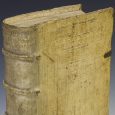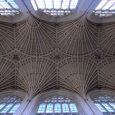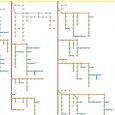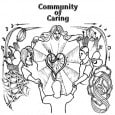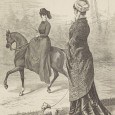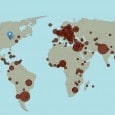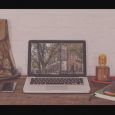-
Recent Posts
Recent Comments
Archives
Categories
Meta
Archives
-
The Books That Made Shakespeare
Posted on October 9, 2017 | No CommentsThe Books That Made Shakespeare The Books that Made Shakespeare is a digital exhibition that allows you to learn about and explore the ways in which Shakespeare’s poems and plays were printed and published, bought and sold, and collected and catalogued. This exhibit explores the books that made Shakespeare: the books he read and used, the books that preserved his works, and the books that shaped his reputation and reshaped his textual afterlives. Visit the project site Principal investigator(s): Adam Hooks Project status: Completed Project web link: http://shakespeare.lib.uiowa.edu/ -
UK Choral Composers
Posted on September 28, 2017 | No CommentsUK Choral Composers This project highlights British choral composition from the twentieth and twenty-first centuries. It features profiles on contemporary British choral composers and a searchable database of their compositions and use of texts, with the aim of supporting education, assisting with repertoire selection when considering concert programs, and providing resources for research. Principal investigator(s): Timothy Stalter Project status: In development -
Women of Ancient History
Posted on September 5, 2017 | No CommentsWomen of Ancient History An interactive, crowdsourced map, WOAH raises the visibility of women working in various fields associated with ancient history. Visit the project site Principal investigator(s): Sarah Bond Project status: Ongoing Project web link: http://woah.lib.uiowa.edu/ -
Tractatus
Posted on November 17, 2016 | No CommentsTractatus This interactive version of Ludwig Wittegnstein’s philosophical work is built around a subway-style map with the aim of making it easier to navigate the sequences of statements laid out in the book. This is the first Tractatus website to provide a map of the book’s overall structure, and the only one that provides parallel access to the earlier versions of the text in the Prototractatus. Visit the project site Principal investigator(s): David Stern Project status: Ongoing Project web link: http://tractatus.lib.uiowa.edu/ -
Oakdale Community Choir Site
Posted on September 9, 2016 | No CommentsOakdale Community Choir Site Forthcoming. Visit the project site Principal investigator(s): Mary Cohen Project status: Ongoing Project web link: http://oakdalechoir.lib.uiowa.edu/ -
Death and Life at Bolores and the Sizandro Valley, Portugal
Posted on August 23, 2016 | No CommentsDeath and Life at Bolores and the Sizandro Valley, Portugal Death and Life at Bolores and the Sizandro Valley, Portugal showcases the archaeological research carried out by Katina Lillios (Professor, Anthropology), University of Iowa students, and collaborators at the third millennium BCE burial at Bolores (Torres Vedras, Portugal) and investigations in the Sizandro Valley. Funded by a grant from the National Science Foundation, this research aimed to assess the relationship between environmental change and human behavior during this important period in the Iberian Peninsula, when human groups first came together in large population centers and then abandoned these centers around 2200 BCE. A series of studies were also carried on ritual practices, social differentiation, health, mobility, and diet, and these will be summarized on the site. Visit the project site Principal investigator(s): Katina Lillios Project status: Ongoing Project web link: http://bolores.lib.uiowa.edu/ -
Pull of Horses
Posted on August 23, 2016 | No CommentsPull of Horses The Pull of Horses: Embodied Interactions across Urban American Species, 1865-1920 is a digital video project depicting urban life of this transformational era, and exploring how cross-species interactions moved histories and constructed economic and cultural identities. Drawing upon a rich archive of visual materials: magazine illustrations as well as contemporary and historic film footage, Pull of Horses focuses on the effect of equine contact with human female bodies, which in particular, aroused concern, as mostly white upper- and middle-class women took up riding en masse in highly visible venues around New York City. Visit the project site Principal investigator(s): Kim Marra Project status: Completed Project web link: https://www.lib.uiowa.edu/gallery/exhibit/the-pull-of-horses/ -
International Writing Program Map
Posted on August 15, 2016 | No CommentsInternational Writing Program Map The map project that the Studio built for the International Writing Program aims to visualize a mass of unruly data consisting of the nearly 1400 writers from a fluctuating number of countries, close to 190. Because of the program’s longevity—nearing now 50 years—its roster and aggregate counts reflect, among other things, the considerable changes in the world’s geopolitical map since the program’s founding in 1967. Thus, what at that point counted as one country—Czechoslovakia, Yugoslavia, USSR, German Democratic Republic—could some decades later split into two, six, ten, new ones, or disappear completely, with a writer’s national identity left uncertain in the political spectrum: should pre-1993 Soviet writers be aggregated alongside Russians after USSR disintegrated? How to graphically render writers coming from the same geographic space, but which some preferred to call, in the spirit of political dissent, “Burma” and others, more formally, “Myanmar”? Etc. The ruling principle of the site design was to allow whenever possible a writer’s preferred self-identification by creating new features whenever necessary. In addition to basic search categories, such as year of participation, gender, genre, age, or profession, the map makes it possible, for instance, to identify participants who write in more than one language—an attempt to inflect the map software’s geopolitical infrastructure with the emergent and increasingly common condition of transnationality. The site’s timeline feature—where the user can observe historical patterns—makes apparent long-term changes in the program’s focus and reach: thus for instance after more than a decade of Taiwanese participants only, Mainland China surfaces on the map in 1979. Finally, the map also makes visible the blank spaces, the countries from which no writer has so far participated in the IWP. One by one, the data in this category will hopefully be shrinking further with each coming year. We are grateful to designer Mark NeuCollins for his willingness to patiently take on the many automation-resistant design challenges. Visit the project site Principal investigator(s): Nataša Ďurovičová Project status: Ongoing Project web link: http://iwp.uiowa.edu/page/iwp-timeline-map -
Uptight & Laid-back
Posted on April 26, 2016 | No CommentsUptight & Laid-back Uptight & Laid-back: Iowa City in the 1960s, is an ongoing collaborative project developed by University Archivist David McCartney and the Studio. Curated topics pages and an interactive map map invite the public to explore an array of material associated with the campus and the community during this dynamic and turbulent decade. Visit the project site Principal investigator(s): David McCartney Project status: Ongoing Project web link: http://dsps.lib.uiowa.edu/sixties/ -
LitCity
Posted on March 23, 2016 | No CommentsLitCity LitCity takes you on a tour of Iowa City’s rich literary history. Explore the spots in this UNESCO City of Literature that inspired writers – where they lived, where they wrote, and the places they wrote about. Visit the project site Principal investigator(s): Lauren Haldeman Project status: Ongoing Project web link: http://litcity.lib.uiowa.edu/

